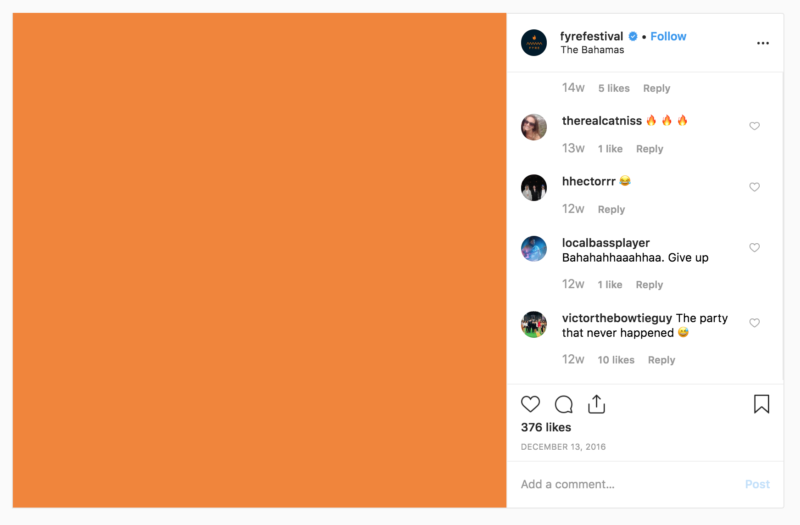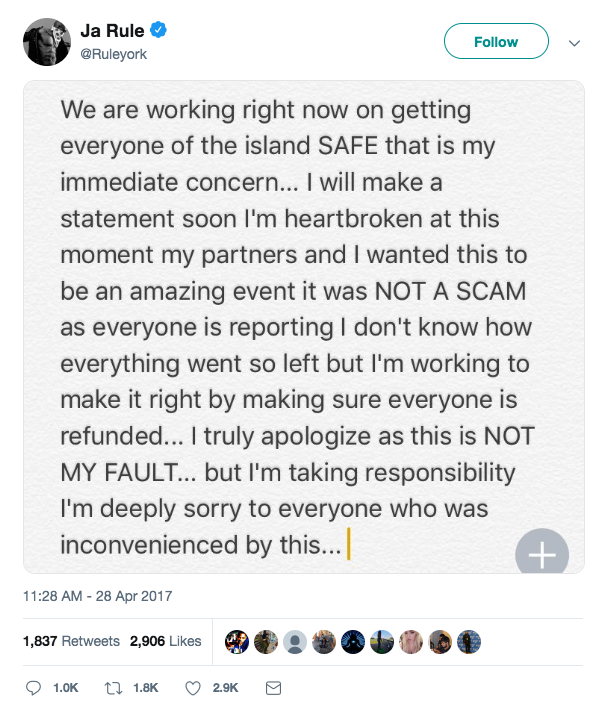The Fyre Festival is back under the spotlight following Netflix and Hulu’s documentaries, Fyre: The Greatest Party That Never Happened and Fyre Fraud. The documentaries have raised questions about the trustworthiness of influencer marketing, with many casting blame for the disaster on the influencers who promoted the event. The festival has also provided us with key learnings that could be used to improve influencer marketing.
From a marketing standpoint, the Fyre Festival was successful in showing how powerful influencer marketing could be. But it also showed how quickly things could turn south when there’s a lack of due diligence and transparency. To understand what worked and what didn’t in the campaigns, here’s a quick summary of the Fyre Festival:
- Billy McFarland wanted to create an exclusive, luxury music festival on the Bahamian island of Great Exuma.
- Fyre Festival paid celebrities and influencers to create hype and excitement around the festival. People ended up shelling out between $500 to $12,000 for tickets.
- Logistical planning for the festival started less than 2 months before the date the festival was supposed to begin.
- Fyre Festival sold a luxury experience, but it didn’t live up to expectations.
- Following the festival, McFarland was sentenced to 6 years in prison, and was ordered to forfeit $26 million in restitution.
Table of Contents
Fyre Festival’s marketing strategy
The team hired marketing agency Jerry Media — founded by FuckJerry’s Elliot Tebele, a popular meme account — to advertise Fyre Festival. The agency coordinated their marketing campaigns.
Collaborating with celebrities
The Fyre Festival team flew out the most well-known supermodels, like Bella Hadid, Kendall Jenner, Hailey Baldwin, and Emily Ratajkowski, among others, to an island to create promotional content for the festival. McFarland spent millions on the models, private jets, and yachts. The models shared FOMO-inducing photos of their Bahamian getaway on Instagram. The content from this trip gave others the impression that: (1) the event was going to be very lavish and (2) the festival guest list would be filled with celebrities, models, and other social media elites.
Sharing Orange Tiles on Instagram
On December 12, 2016, 63 influencers (or ‘fyre starters’) simultaneously published a mysterious orange tile on Instagram with a link to Fyre Festival’s website and the hashtag: #FyreFest. The campaign generated 300 million impressions in 24 hours.

The influencer marketing campaign eventually grew to include 400 influencers, and Fyre Festival quickly sold $4,000 tickets to 5,000 people. Many of the influencers were offered free flights, accommodations, and tickets to attend the festival.
Mistakes & key learnings
The influencers didn’t disclose their collaborations properly.
Many of the influencers who promoted the Fyre Festival did not properly disclose their sponsored content. Most notable were the models who were flown out to promote the event. Because the influencers did not clearly label their promotions as an ad, they misled their audience into believing that the promotions were organic and did not involve any form of compensation. This behavior prevents consumers from making informed decisions when they want to make a purchase. Maintaining greater transparency by disclosing all sponsored content is crucial to maintaining trust between influencers and their followers.
Disclosure regulations can vary from country to country. Use our guide on how to disclose sponsored content for the UK & US. The regulations for how to disclose sponsored content in the Nordics.
The influencer marketing campaign focused on macro-influencers & celebrities.
The Fyre Festival team ended up spending millions to collaborate with macro-influencers. Kendall Jenner, one of the models that promoted the festival, was reportedly paid $250,000 for a single Instagram post. The other influencers were paid no less than $20,000 for their posts. Fyre Festival may have been able to save some money by integrating micro-influencers into the mix, as they’re generally less expensive to work with. Micro-influencers also tend to have a smaller, but more loyal audience, which is why they typically have higher engagement rates than macro-influencers.
By working with micro-influencers, McFarland and his team may have been able to deliver a higher ROI, as well as saved millions they could’ve funneled towards other essential festival components, such as housing and food.
The influencers didn’t do their due diligence before agreeing to collaborate.
The influencers involved in the campaign promoted the Fyre Festival without doing their research. If they raised a few questions or developed a thorough understanding of the festival, they may have figured out that the festival couldn’t have lived up to expectations. Because they didn’t, they represented a festival that didn’t deliver on its promises, which in turn damaged their credibility and made the collaborations seem more like transactional cash grabs than genuine promotions.
Influencers should do their due diligence to ensure they know about the brand they’re promoting before committing to any collaboration.
The influencers, marketers, and festival organizers haven’t all apologized.
When a disaster like this occurs, one of the most obvious things to do would be to apologize for the mistakes that were made and to come up with a plan to rectify them. While some people associated with the festival have apologized, others have rejected any blame.

In order for brands and influencers to gain trust back from consumers and followers, they need to be upfront and take responsibility for their part in the festival, rather than staying silent on the issue or providing a mediocre apology.
Following the Fyre Festival, we’re already seeing a shift in the influencer marketing industry. Over the past year, our team has noticed that brands and influencers are committing to more long-term partnerships. They’re also being more selective with who they choose to work with, and they ask more questions to ensure they’re a good fit for one another. These changes will bring a positive development to the industry as a whole.
inzpire.me
inzpire.me is an influencer marketing platform that connects brands with creators across the globe. Ready to launch a campaign? Schedule a call today!










